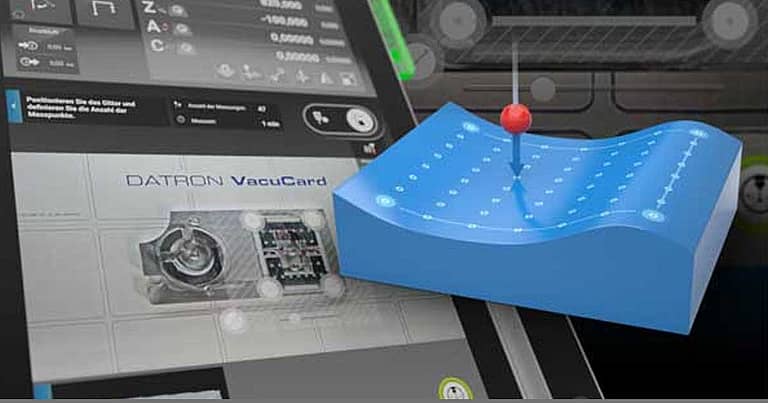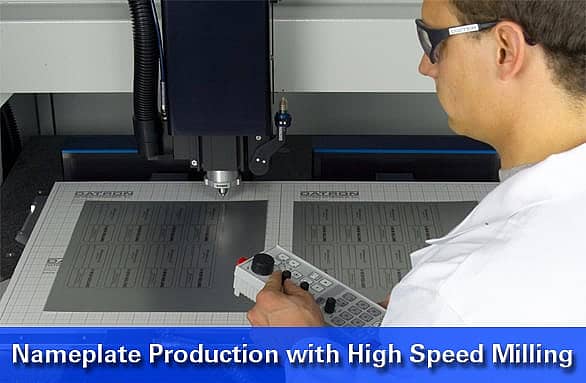
Engraved Name Plate Production
As recently as a decade ago, there was discussion regarding the best process for engraved name plate production –with the main contenders being the Pantograph, Stamping Machines and Milling Machines. Since that time, the argument for the pantograph has all but gone the way of the dinosaurs. That is because pantograph is a manual machine that requires extremely skilled craftsmen, so the process cannot be automated and it has become difficult to find qualified operators. Both of these factors increase costs. Stamping Machines, on the other hand, remain a viable method for engraved name plate production. Particularly where very large production runs are required, stamping machines have noticeable advantages. Specifically, for runs of say 20,000 name plates, the fact that these machines can produce a couple of parts per seconds makes them a logical choice. For lower runs, however, the costs of running stamping machines reduce the appeal. Much of the cost is associated with the dies required for the process which range from $2,000 to $5,000 each. Combine that cost with the quality of a stamped name plate and the stamping process becomes unattractive. This is because the stamping machine removes material from the workpiece by pushing the die down through the material like a cookie cutter. The force created at the location of the cut bends and shears the substrate. With malleable materials like metal this can mean bending at the edge and with other more brittle substrates, chipped edges can result. Finally, stamping machines are limited in functionality to just stamping or cutting the part out. So if the end product requires a counter sunk hole, tapping or engraving (perhaps for serial numbers), this would require another piece of equipment and a secondary operation – both at additional cost to the manufacturer.
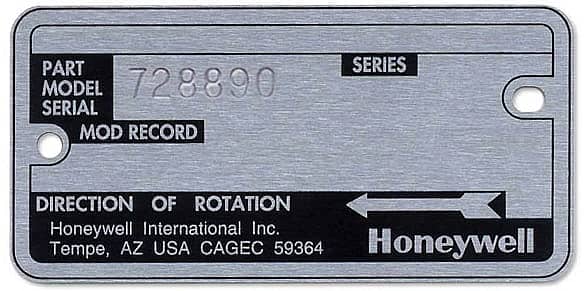
So, for lower volume name plate engraving, milling machines — and specifically high speed milling machines — reign supreme. The remainder of this blog post will focus on high speed milling machine features that provide the competitive advantage in engraved name plate production.
High-Speed Spindle
Most ID product and name plate engraving is done with small engraving bits and end mills. These small tools must be run at high speeds. High-speed milling machines featuring high-frequency spindles from 40,000 to 60,000 RPM effectively evacuate chips from the cutting channel during milling and engraving. This results in smooth surfaces and burr-free edges. It also eliminates the need for a secondary de-burring operation, as well as the costs associated with it.
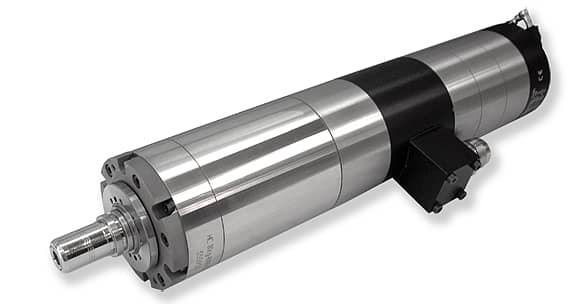
Probing
Probing or Surface Scanning (Mapping) saves time during job setup and ensures accuracy and repeatability. Probes available as an integrated component on some milling machines can recognize irregular work-piece topography and compensates for it dynamically. They do this by taking measurements along the surface of a blank and feeding that data into the machining controller. The controller automatically adjusts for uneven surfaces or work piece position. Through this process, job setup times are reduced and piece/part rejection is minimized.
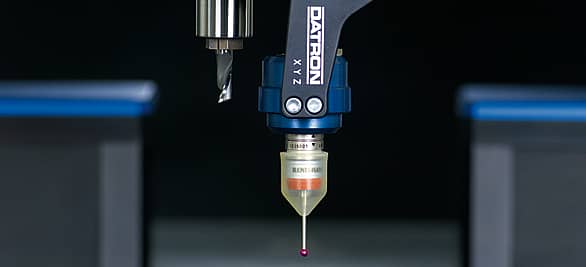
Oil-Free Coolant
While Probing can save valuable time at the front end of engraved name plate production (during set up), oil-free coolants can save time at the back end. That’s because unlike oil that leaves residue on the completed nameplate, certain oil-free coolants simply evaporate. So, the secondary de-greasing operation can be eliminated – thereby reducing the cost of labor, the cost of consumables required for cleaning, and most importantly minimizing total engraved name plate production time.
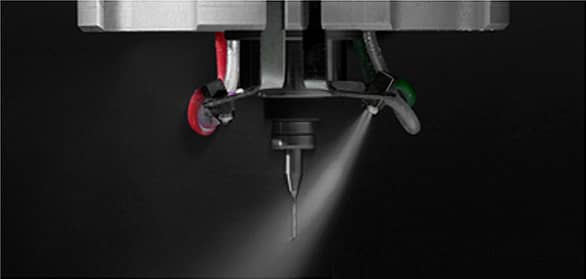
Integrated Vacuum Table Workholding
Workholding for engraved name plate applications, like production runs of Metalphoto, can be problematic. Thin substrates are difficult to hold. This is particularly true if the manufacturer is using a conventional CNC to engrave or cut small parts with limited surface area, because the force of the spindle can literally “fling” the part across the machine bed once it is completely cut out. Many manufacturers actually resort to spray glue as a method of workholding. Not only is this messy, it can also lead to bending when the finished part is removed from the machine bed. Plus, it results in a time consuming and costly secondary application to remove the glue form the completed parts.

However, some high-speed milling machines can be equipped with integrated vacuum table workholding. For example, with DATRON’s vacuum table, thin stock, that was once difficult to secure, can now be secured in just seconds. Plastic foils as thin as 0.001”, up to 0.250” thick aluminum sheets can be secured quickly and held in place even when the parts are “cookie-cut” completely through the material. A vacuum pump provides vacuum power for the system to work. A vacuum table features airflow-optimized vacuum ports, with recessed vacuum chambers, to provide superior vacuum distribution. A low cost gas-permeable substrate serves as a sacrificial vacuum diffuser, allowing the cutter to machine through the workpiece, without cutting into the table.
Automatic Tool Management
ID product and engraved name plate manufacturers considering various CNC machines for milling and engraving, need to consider their current processes and what their ideal process might be. In other words, they may currently be running only one or two shifts, but in a perfect world, an unattended overnight shift could be the secret to increased profitability. Even if a “lights-out” shift isn’t in the cards, a day shift where the CNC machine can run unattended allows the operator to tend to other business – thereby providing the manufacturer with more productivity from a single employee.

So, choosing a CNC with the right kind of tool management is crucial. The required Automatic Tool Management System is made up of three separate components working in synergistically — the tool checker, the tool changer, and the software. The tool checker is a mechanical sensor that measures tool length and detects the broken tool. The tool changer is a rack or tray that has space for spare tools and sockets where the machine places broken tools before picking up a replacement. Operators can stock the rack with spare tools, so they have a ready supply should tools break during “lights out” operation. The software is a macro program that can be set up to run a tool check after executing a number of lines of code. For example, a tool check macro can initiate a check after every 500 lines of code by employing an “if/then” statement such as, “Measure this tool; if the length is shorter than the parameter (listed in the software’s tool database), then change the tool.”
Wrapping It Up
ID product and engraved name plate manufactures who specialize in low production runs can gain efficiency, flexibility and an overall reduction in cost by using high speed milling machines. Since most of these manufacturers use small tools, it is imperative that they select a CNC machine designed specifically for use with small tools. High-speed spindles are best suited for small tools and produce burr-free parts with superior surface and edge finishes. The low force of these spindles maximizes tool life and enables innovative workholding such as integrated vacuum tables that reduce setup times. Probing also makes setup more efficient and ensures accuracy and repeatability. Automatic Tool Management provides a reduction in cost by enabling unattended or lights-out production. High speed milling machines that deliver all of these features provide manufacturers of ID products and engraved name plates with a real competitive and cost-reducing advantage.




